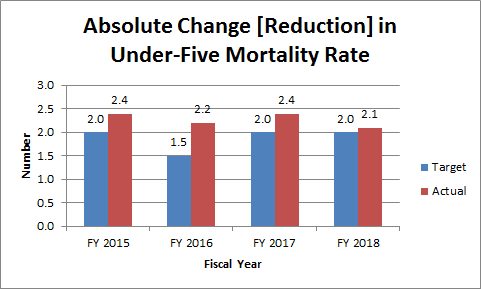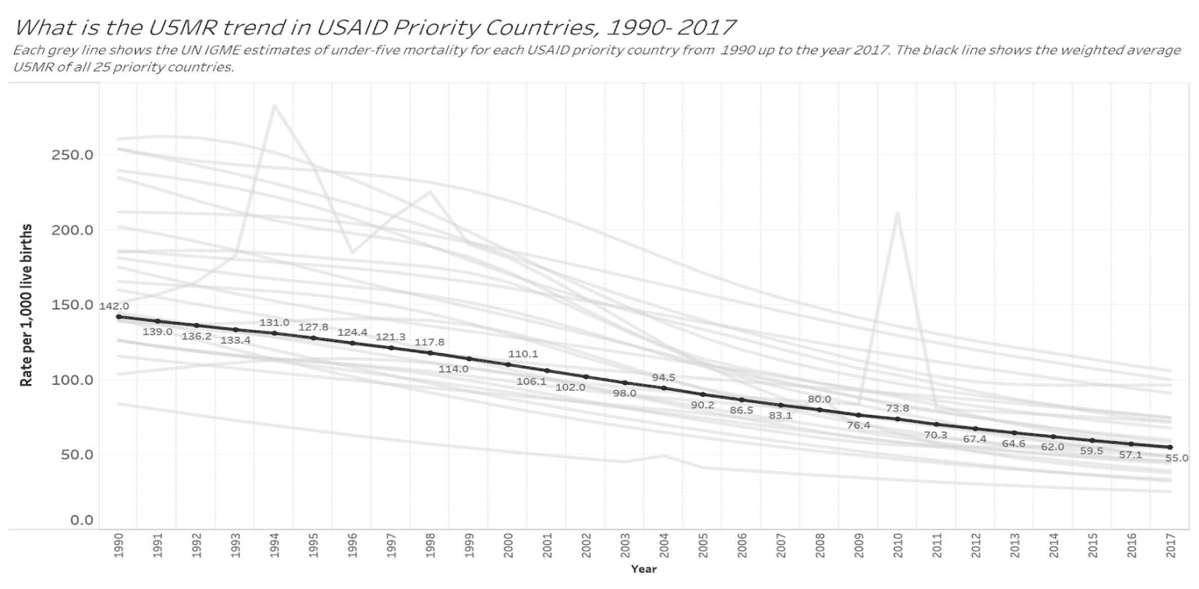United States Agency for International Development
Transforming USAID to Improve Outcomes
Through a series of interconnected and employee-led reforms, USAID is changing the way it does business to achieve greater development outcomes and strengthen the capacity of partner countries on their journey to self-reliance. As part of this transformation, USAID is encouraging innovative and effective solutions to some of the world’s most intractable development challenges. The Agency Priority Goal (APG), Effective Partnering and Procurement Reform, advances more effective co-creation, innovative financing, and partnerships with a diverse array of actors to strengthen in-country capacity and increase development impact. USAID recently established baselines and targets for increasing the use of innovative partnering and procurement approaches.
The Agency is already seeing results in the form of the world’s first health impact bond – the Utkrisht Impact Bond. Impact bonds are 100 percent focused on outcomes and leverage private investor capital to address some of the world’s greatest challenges. This particular bond aims to save up to 10,000 women and newborns over five years. The Utkrisht Impact Bond was developed in partnership with Merck for Mothers, the UBS Optimus Foundation, Population Services International, Palladium, and Hindustan Latex Family Planning Promotion Trust. Private capital will fund the initial investment, and the Agency will only pay when the development outcomes are achieved.
The bond also supports USAID’s APG on maternal and child health, which strives to reduce under-five mortality in 25 maternal and child health U.S. Government-priority countries. Global child mortality has decreased by half since 1990, which translates into 18,000 more children and 650 more mothers surviving every day. Despite this progress, 5.6 million children, and 303,000 women still die every year, primarily from diseases or other preventable causes. By working with partners through the Utkrisht Impact Bond, USAID will use capital raised from private investors to reach up to 600,000 pregnant women with improved care during delivery – potentially saving up to 10,000 lives over a five year period.
The Bond will also improve the quality of maternal care in Rajasthan’s private health facilities by supporting up to 440 Small Healthcare Organizations to meet and maintain new government quality standards. The project will serve as a proof of concept for future healthcare interventions and outcomes-based contracts throughout India.
Reduction in under-five mortality (UFMR) in the 25 priority countries is the performance indicator USAID uses to measure progress (see graphs below). The Agency has exceeded its targets for this metric since 2015.
Maternal and Child Health Agency Priority Goal Absolute Change [Reduction] in Under-Five Mortality Rate

Under-Five Mortality Rate Trends in USAID Priority Countries, 1990-2017
Each gray line shows the UN IGME estimates of under-five mortality for each USAID priority country from 1990-2017. The black line shows the weighted average UFMR of all 25 priority countries.
Performance.gov is the home for updates and progress on Agency Priority Goals (APGs) and Cross-Agency Priority (CAP) goals. Occasionally we invite agency experts to share their perspectives on progress and lessons learned. Have a story to share? Contact pgovsupport@gsa.gov.

